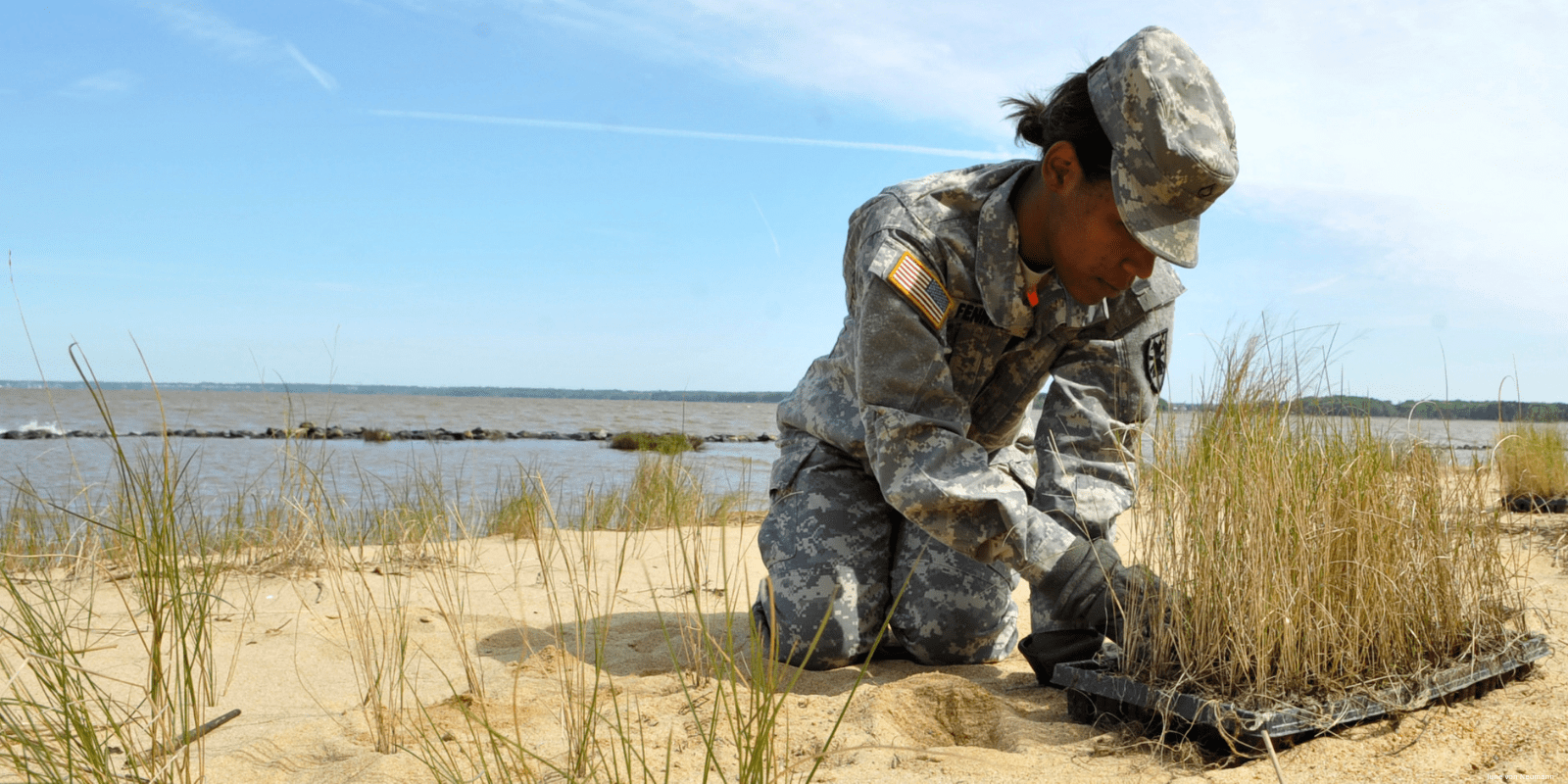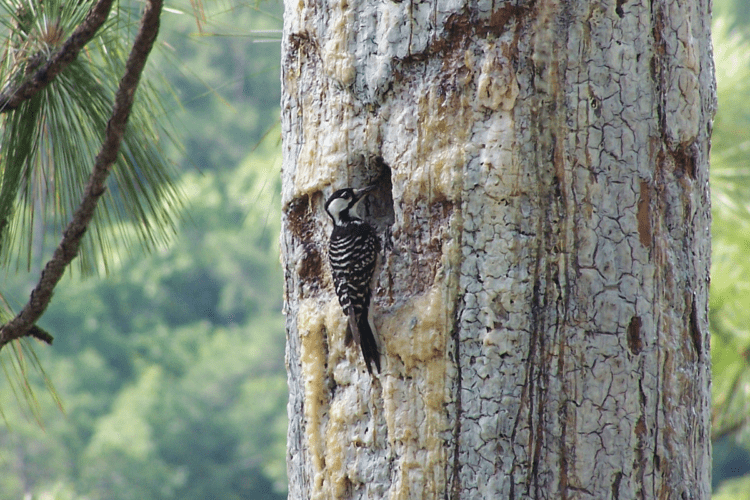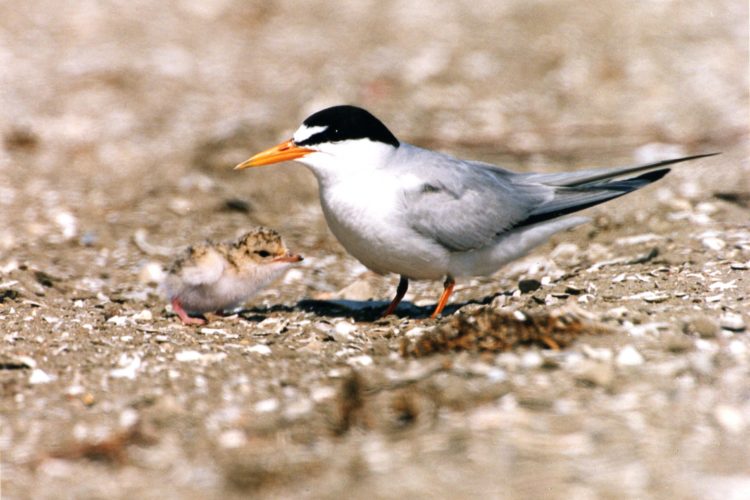We have much more to do and your continued support is needed now more than ever.
Military Bases & Wildlife Share a Common Threat: Climate Change

Climate change is fueling extreme weather, resulting in more severe drought, floods, wildfires and hurricanes. Both the U.S. military and wildlife are put at further risk by federal inaction as storms, floods, and fires damage domestic military bases and wildlife habitat.
The U.S. Department of Defense has already raised concerns about the impact of climate change on national security. A report from the Pentagon details how climate change leaves 79 U.S. military installations vulnerable to recurrent flooding, drought, desertification, wildfires, and thawing permafrost:
About two-thirds of the 79 installations addressed in this report are vulnerable to current or future recurrent flooding and more than one-half are vulnerable to current or future drought. About one-half are vulnerable to wildfires. It is important to note that areas subject to wildfire may then experience serious mudslides or erosion when rains follow fires.
Military Bases are Home to Wildlife Habitat
Natural ecosystems on military installations provide a realistic setting for the training and testing that is essential for maintaining military readiness. These ecosystems also are home to a diverse set of wildlife species, including many that are rare or endangered. Indeed, the Department of Defense has been a leader in finding ways to conserve species and habitats in ways that work for both wildlife and training needs. Camp Blanding in Florida maintains wildlife habitat for endangered red-cockaded woodpeckers and gopher tortoises, and Fort Bragg in North Carolina worked with conservationists to ensure military readiness and the conservation of butterflies and birds did not conflict. Legislation ensures that installations can engage in conservation work on the bases as well as beyond their fenceline when needed to reduce the threat of encroachment and maintain readiness. The Sikes Act, in particular, promotes coordination with federal and state wildlife agencies and ensures that the natural resources found on the 25 million acres of military land are well managed.

Current Impact of Climate Change
Flooding remains a constant issue for Joint Base Langley-Eustis in Virginia as sea levels rise and hurricanes move up the coast. According to the Daily Press, Hurricane Isabel left $146 million worth of damage and shut down the airfield for four days and the entire base for seven. Coastal restoration provides a natural infrastructure solution to the recurrent flooding, and provides habitat for the diamondback terrapin turtle, “a declining species being surveyed at Langley AFB, to lay its eggs”.
Similarly, in 2018 Hurricane Florence caused severe beach erosion at Camp Lejeune in North Carolina. Not only did the storm cause more than $3 billion in damage, it impacted the ability of Marines to conduct amphibious landing trainings, delaying their certification for an overseas deployment.
Heightened wildfire risk from prolonged drought is also causing problems for many installations, including reducing opportunities for use of live fire during training exercises. Wildfires can affect military operations in other ways as well. The 2016 Canyon Fire burned 12,742 acres of land over ten days, including some on Vandenberg Air Force Base. According to a local Santa Barbara news outlet, the wildfire interfered with long-planned military operations and “forced crews to scrub the Atlas V rocket launch planned for Sunday morning, and the next attempt won’t occur for a week.”
The servicemembers at Vandenberg Air Force Base are award-winning conservationists. They patrol the beaches to protect seabird nesting and help report violations of careless beachgoers who may disrupt threatened and endangered species. For their efforts in protecting habitat for shorebirds like the federally endangered California least tern and Western snowy plover, Vandenberg Air Force Base received the U.S. Fish and Wildlife Service’s Military Conservation Partner Award in 2015.
Restoring Wetlands, Dunes, and Forests: Climate Resilience through Natural Infrastructure
Natural infrastructure, such as forests, floodplains, beaches, and grasslands, can provide flood protection, water purification, and carbon storage. And restoration of these ecosystems can provide protection for military bases and habitat for native wildlife.
Naval Air Station Oceana, located near Virginia Beach at the mouth of the Chesapeake Bay, supports training and testing that includes amphibious landings along its beachfront. This region is subject to unusually high rates of sea level rise and storm surge, however, which can seriously affect the installation’s operations. Dune restoration at the installation’s Dam Neck Annex is being carried out to both protect important training assets as well as to maintain habitat for a number of migratory and resident species, including sea turtles and shorebirds.
Eglin Air Force Base in the panhandle of Florida is one of the Air Force’s premier training and testing facilities, in part due to its varied natural habitats, including extensive longleaf pine forests. Eglin is also located in one of the nation’s biodiversity hotspots and harbors a host of unusual and rare species. The installation’s award-winning natural resource management program makes extensive use of prescribed fire to ensure that the naturally climate-resilient longleaf pine forests continues to provide excellent training opportunities and sustain healthy wildlife populations.

But there’s good news!
Today, the House Select Committee on Intelligence is holding a hearing on the impact of climate change on national security. Taking climate action and innovating wildlife-friendly ways to increase resilience to climate change—like natural infrastructure—are essential for preserving our wildlife and protecting servicemembers. Hearings provide opportunities for lawmakers to get expert input on issues, and to receive testimony that provides the basis for legislation.






















